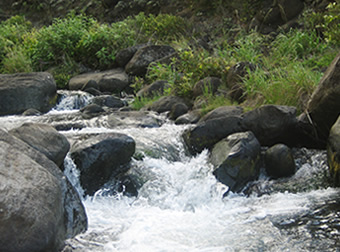Out of the world’s total land area of 13 billion hectares (ha), 12% is cultivated, and an estimated 27% is used for pasture. The 1.5 billion ha of cropland include 277 million ha of irrigated land, representing 18% of cropland.

In population terms, cropland amounts to a global average of 0.25 ha per person.
To satisfy the growing demand for food between 2000 and 2030, production of food crops in developing countries is projected to increase by 67%. At the same time, a continuing rise in productivity should make it possible to restrain the increase in water use for agriculture to about 14%.
Producing food requires from 2,000 to 5,000 litres/person/day, depending on diet and climate differences and the efficiency of local food production systems.
Most of the water used to produce food or other crops comes from rain that is stored in the soil (so-called green water), where it is captured by crop roots. Irrigation is practised in places and times where rainwater is insufficient for adequately supplying water to crops.
Globally, rainfall provides about 90% of the water used by crops. Although it covers only 10% of the water used in agriculture, irrigation claims 70% of all the freshwater (so-called blue water) used for human consumption.
In 2030, irrigated agriculture in 93 developing countries would account for over 70% of the projected increase in cereal production. In these countries, the area equipped for irrigation is expected to expand by 20% (40 million ha) between 1998 and 2030.
Thanks to increased cropping intensity, the area of harvested crops in irrigation is expected to increase by 34% by 2030. In the same period, the amount of freshwater that will be appropriated for irrigation is expected to grow by about 14% to 2,420 km3 in 2030.
In the global debate about increasing water scarcity, agriculture is often associated with the image of inefficient, wasteful water use. This image is conveyed by poor performance in terms of ‘water use efficiency,’ a term that was defined as the ratio between the irrigation water absorbed by the plants and the amount of water actually withdrawn from its source for the purpose of irrigation. FAO has estimated that overall water use efficiency in irrigation ranges around 38% in developing countries and has projected only a minor increase in overall water use efficiency in the forthcoming decades.
Information from:
the 2nd United Nations World Water Development Report, ‘Water, a shared responsibility’
Source: UNESCO Water Portal, August 2006

